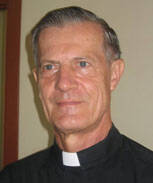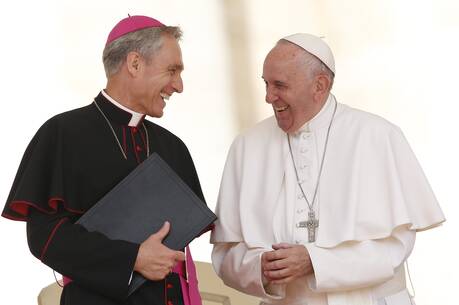Christian faith takes history seriously. Jesus was born in Bethlehem, a real place, and at a specific time. A traditional way to proclaim the birth of Jesus is found in the Roman Martyrology. When I was a first-year Jesuit novice in 1957, this was read during dinner on Christmas Eve and then sung in Latin at Midnight Mass. That version had been assembled and approved in 1584. Calculating from the Old Testament, it put the birth of Jesus 5,199 years from the creation of the world. From the birth of Abraham, 2,957 years had passed and from the Exodus, 1,510 years.
A newer version, published by the U.S. Catholic bishops in 1994, spoke of “unknown ages from the time when God created the heavens and the earth,” 21 centuries from the time of Abraham and Sarah and 13 centuries after Moses led the people of Israel out of Egypt.
In 2001 the Sacred Congregation for Divine Worship updated the entire Martyrology to be more historically accurate. The entry for the Nativity began, “From the creation of the world…countless ages have passed.” Abraham remained at “about 2,100 years,” and since the Exodus, 13 centuries.
Biblical scholars continue to establish more accurate dating of historical events of the Old Testament, and scientists refine the age and stages of the universe. A Martyrology entry for the Nativity based upon contemporary biblical scholarship and science (and allowing for further development) might picture the history of the universe into which Jesus Christ entered as follows:
The Twenty-fifth Day of December
From the creation of the world, when in the beginning God created the universe, 13.7 billion years,
From the formation of the first galaxies, 10 billion years,
From the formation of our galaxy, sun and solar system, five billion years,
From the formation of planet Earth, 4.6 billion years,
From the origin of life on Earth, the first living cells, 3.5 billion years,
From the time when the continents of earth stabilized, 2.5 billion years,
From the time of the first ice age, 2.3 billion years,
From the birth of sea life and fish in the ocean, 550 million years,
From the first plants and vegetation on land, 400 million years,
From the age of the dinosaurs, 230 million years,
From the age of the first apes and monkeys, 35 million years,
From the age of Homo habilis, 2.6 million years,
From the time of Homo erectus and the use of tools, 1 million years,
From the time of the first female from whom all human DNA can be traced, 160,000 years,
From the time of Homo sapiens and the use of language, 80,000 years,
From the time of the last ice age, 12,000 years,
From the time of the first cities, 10,000 years,
From the invention of phonetic writing, 3,500 years,
From the time of the flourishing of civilization in Egypt, 3,000 years,
From the time of Abraham and the Patriarchs, 1,925 years,
From Moses and the coming of the Israelites out of Egypt, 1,280 years,
From the anointing of King David,1,011 years,
From the time of the prophets Amos, Hosea and Isaiah, 750 years,
In the 194th Olympiad,
In the year 752 since the founding of the city of Rome,
From the time of the poet Homer, 700 years,
From the time of Socrates, Plato and Aristotle, 450 years,
In the 42nd year of the empire of Octavian Augustus, when the Roman world was at peace,
Jesus Christ, eternal God and Son of the eternal Father
Desirous to sanctify the world by his most merciful coming,
Having been conceived of the Holy Spirit,
And nine months having elapsed since his conception,
Is born in Bethlehem of Judah,
Having become human of the Virgin Mary.
The Nativity of Our Lord Jesus Christ According to the Flesh.








